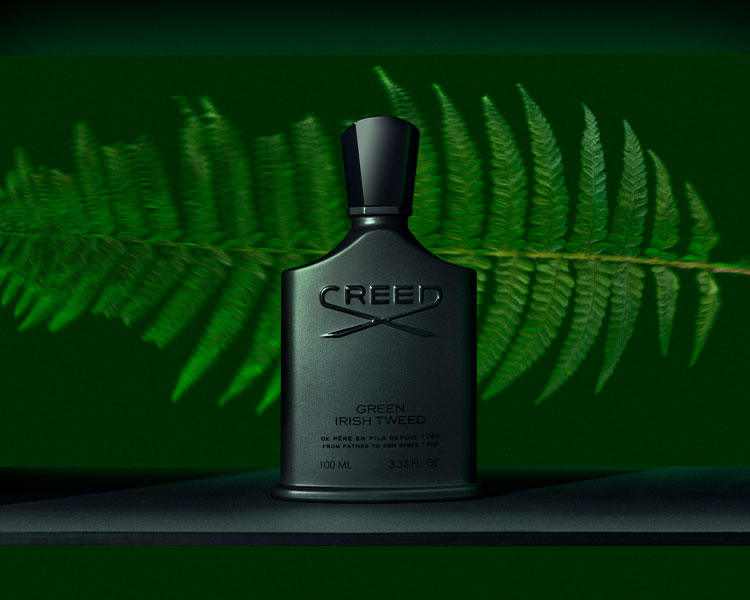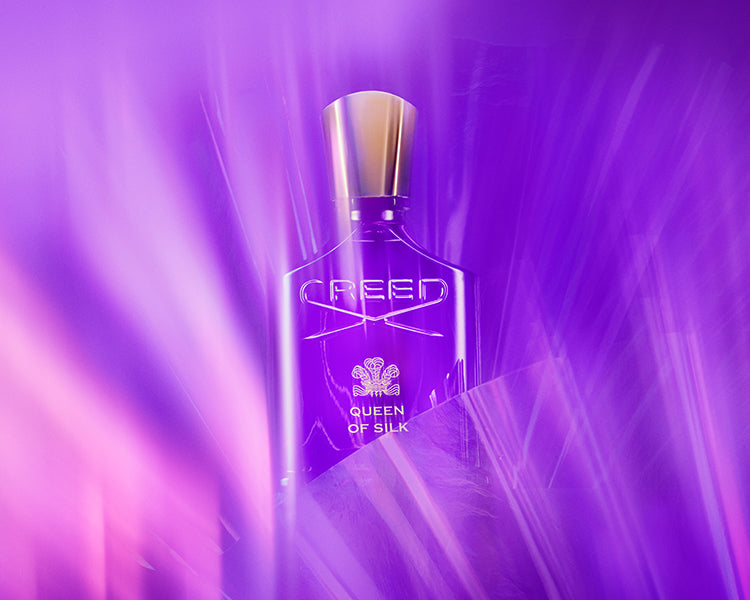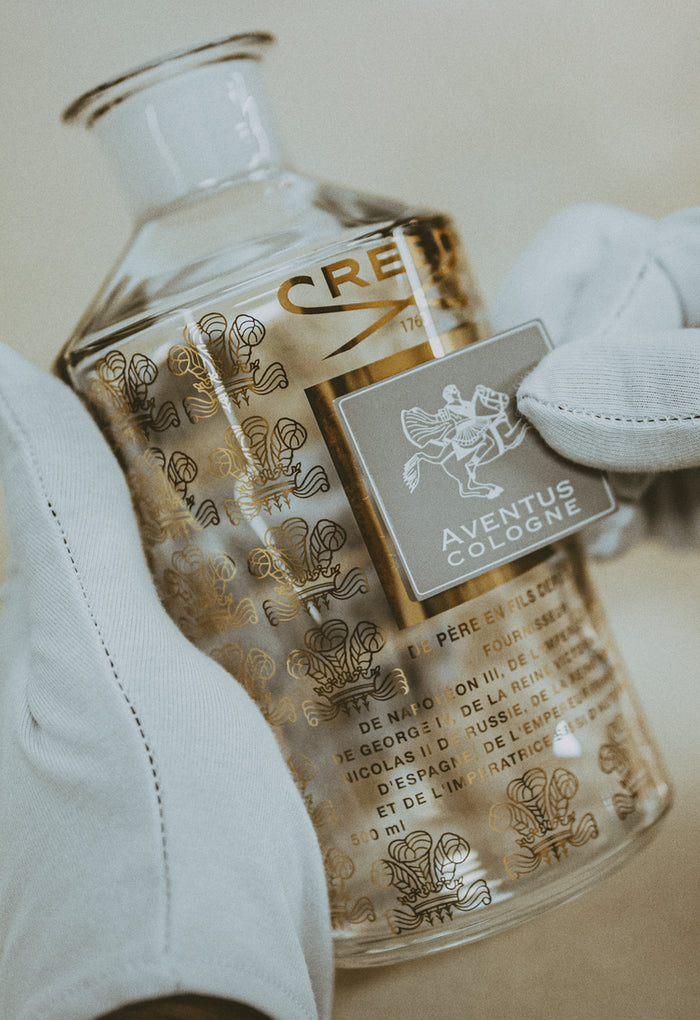Warm and earthy, oud perfumes are known for their signature woody profile. These scents are home to rich, leathery notes coupled with a subtle smokey accent – and, much like musk or amber fragrances, they are treasured for their aromatic intensity.
Often referred to as ‘liquid gold’, oud is one of the most expensive raw substances in the natural world. Take a tour of this opulent ingredient – and explore a selection of exquisite oud fragrances from The House of Creed.
What is Oud?
Oud is an intensely fragrant oil extracted from tree resin. In perfumery, it is often used as a base note – its signature depth and rich animalic aroma provide a sensual, woody dry down. With its earthy notes and intriguing character, oud perfumes are synonymous with seduction.
Part of oud’s allure is also found in its rich history: it is an ingredient that has been used in herbal medicine, perfumery and spiritual rituals for centuries, particularly in Southeast Asia and the Middle East. Dating back to 1400 BC, it appears in the Sanskrit Vedas as a substance connoting wealth and luxury.
Oud oil also features in many other religious texts and traditions: agarwood – from which oud oil is extracted – is mentioned several times in the Bible’s Old Testament, while Muslim prophets were said to cleanse their clothes with its smoke.
Today, agarwood chips are often burnt as incense at religious ceremonies across China, Japan and India – and oud oil is used as a token of hospitality in mosques, temples and family homes across the globe. As well as its widespread religious uses, oud is also prized for healing purposes: known for its anti-inflammatory and soothing properties, it is frequently used in herbal teas and meditation rituals.
With its global cultural significance, oud perfumes pay homage to the rich history of this precious substance, conjuring ancient tradition and an exquisite olfactory experience.
How is Oud Made?
In Arabic, ‘oud’ literally translates to ‘wood’ – and its etymology is a nod to the way the substance is made. In its purest form, oud is a natural resin extracted from the heartwood of the aquilaria tree native to Southeast Asia – found particularly in the rainforests of Bangladesh, Indonesia and Thailand. The aquilaria tree has fifteen different species, but the resin used in perfumery is typically extracted from the wood of Aquilaria malaccensis.
So – how is oud made? When the tree becomes infected, it produces a dark, fragrant resin which seeps into the wood. The tree’s heartwood is typically a light, pale colour that, once in contact with the resin, turns a dark ochre or amber hue. Artisan perfumers then use different methods to extract the resin from the heartwood, such as distillation using steam or melting the substance. Much like other natural resins – such as labdanum from the cistus ladanifer plant or benzoin from the styrax tree – oud resin is dense, sticky and viscous, and dark in colour. Once extracted, this oil is then used to craft exquisite oud fragrances.
What does Oud smell like?
Mysterious and alluring, oud is an enticing scent with a distinctive profile. It is typically described as warm, intense, earthy and sensual – with a slightly animalic note. Given its origins in the natural world, many fragrance connoisseurs liken oud to the scent of fresh, slightly damp soil, a barnyard, or hay drying in the sunshine.
If naturally extracted, oud’s scent can also vary depending on the species of aquilaria tree it is extracted from: some resins have a sweeter aroma, while others are smokier and more balsamic, with their character developing as they dry down. Synthetic ouds also have a different scent profile: they tend to be less animalic than their natural counterparts, and typically slightly sweeter and nuttier.
The profile of oud will also vary depending on its top and heart note pairings – Royal Oud, for instance, is home to the ingredient’s signature woody spiciness crafted with a fresh twist of bergamot. Elsewhere, oud’s characteristic warmth is intensified by its coupling with vanilla and buttery iris in Royal Princess Oud from The House of Creed.
Why is Oud expensive?
Oud is one of the most expensive ingredients in modern perfumery – and agarwood one of the most costly timbers in the world at $100,000 per kilogram – largely due to its rarity. It is estimated that only one out of ten trees in the forests of Southeast Asia will naturally produce the resin – so it is an extremely precious substance, and highly coveted in fragrance formulation.
Another reason for oud’s cost is its extraction method: before distillation, the resin-infused wood chips are carved out by hand in a process that often takes several hours.
Due to its rarity, the aquilaria tree is now a protected species by the CITES (Convention on International Trade in Endangered Species of Wild Fauna and Flora), and many trees are now artificially treated with a microbial compound to produce the agarwood resin – so synthetic ouds are often used as an alternative.
How long does Oud perfume last?
Due to its potency, oud perfume can last on the skin for several hours up to a full day. As it is used as a fixative in fragrance formulation, it is also the ingredient most likely to linger on the skin the longest – once the top and heart notes of the scent have dissipated, you are likely to notice traces of an earthy and animalic aroma.
As a perfume, oud fragrances typically have a slightly longer shelf life than their lighter counterparts: scents with heavier and richer base notes, like oud or ambergris, are less sensitive to oxidation than those with lighter ingredients.
As a general rule, oud fragrances have a shelf life of around three to five years. However, this can vary due to a variety of factors, including formulation and how you store your fragrance. Discover tips on how to store your fragrance here.
Oud perfumes from the House of Creed
At The House of Creed, Erwin and Olivier Creed use rare, luxurious and bold ingredients – like oud – to craft exquisite scents. Discover our two signature oud perfumes here.
Royal Oud
The majestic profile of oud is balanced by fresh, green top notes in Royal Oud. Designed for both men and women, this Eau de Parfum is home to The House of Creed’s signature smoky blend of oud, musk, ambergris, frankincense and guaiac wood – layered with a fresh burst of pink pepper, zesty lime and bergamot.
Royal Princess Oud
Imagine oud with a floral twist, Royal Princess Oud pairs the ingredient’s characteristic woody notes with a bouquet of jasmine, rose, iris and violet. These heart notes are then topped with a revitalising layer of grapefruit, blackcurrant and pineapple – while the warm profile of oud is intensified by the sweet amber note of vanilla.
With its rich history and alluring scent, oud is one of luxury perfumery’s most treasured ingredients – conjuring warm evenings and time-honoured tradition. For those seeking a signature scent with depth and an irresistible mystique, oud perfumes from The House of Creed offer exquisite olfactory experiences.




